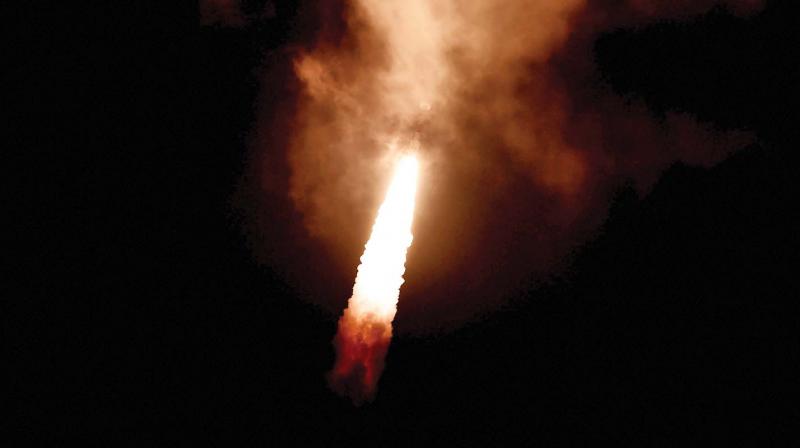Rare failure for Isro in PSLV rocket launch
The rocket lifted off with the navigation satellite from the second launch pad at Satish Dhawan Space Centre in Sriharikota at 7 pm.

Sriharikota: The highly reliable launch vehicle of ISRO - the PSLV rocket – suffered a rare failure on Thursday as the PSLV-C39/IRNSS-1H mission was unsuccessful due to the failure in heat shield separation.
The rocket lifted off with the navigation satellite from the second launch pad at Satish Dhawan Space Centre in Sriharikota at 7 pm.
The launch vehicle and satellite both performed normally until the fourth stage. But after the separation of the satellite from the fourth stage, the scientists came to know that the heat shield did not separate. Both the fourth stage and satellite were caught inside the heat shield.
The PSLV rocket holds the world record for having sent the most number of satellites in a single rocket when PSLV C-37 had placed 104 satellites into orbit on February 15. In its previous mission, the rocket had placed 32 satellites including Cartosat-2E satellite in June. The PSLV-C39 rocket and IRNSS-1H satellite both together cost around Rs 240 crore.
“The heat shield was not separated. We will do a detailed analysis. Though the rest of the activities had gone smoothly, the mission is unsuccessful because the satellite is not in a position to go to the intended orbit,” Isro chairman A.S. Kirankumar said. Apart from the first mission, the PSLV rocket has tasted 39 consecutive successes in 40 missions.
“We are getting into the details of what has happened and we will analyse it and come back with details. All the critical events, the first stage, second stage, third stage and fourth stage and separation have performed normally. Though the satellite was separated internally, it is caught inside the heat shield along with the fourth stage”, he explained.
The heat shield is used to protect the satellite till the atmospheric region. It has to separate and fall out. After that, the released satellite would reach the intended orbit. IRNSS-1H satellite cannot be used as it was enclosed by the heat shield.
Now, Isro scientists have to analyse the heat shield separation command and subsequent commands. The IRNSS-1H satellite was jointly assembled and tested by the space agency and a private consortium of small companies led by Alpha Design Technologies, a Bengaluru based company. When asked whether private companies assembling the satellite could have been one of the reasons for the failure, Mr Kirankumar quickly said, “They assembled the satellite and other than that there is no connection”. The satellite was launched as a backup for IRNSS-1A satellite which was rendered ineffective following the failure of its atomic clocks. The 1,425 kg satellite carried modified atomic clocks along with navigation and ranging payloads.
